A Guide to Styles of Crown Moldings
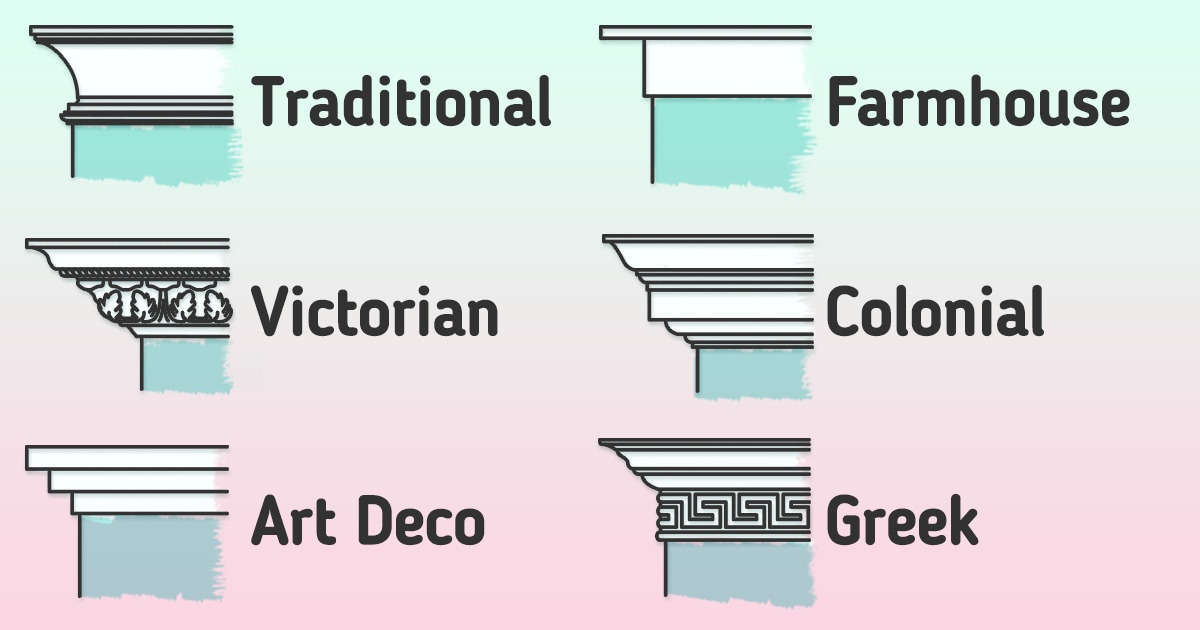
Ceiling moldings are not just another element you can add to your home renovation. They bring a refined note to your home interior and can also cover the cracks and irregularities on your ceiling that you prefer to remain unseen.
5-Minute Crafts is here to offer you a short guide on ceiling moldings.
I. What crown moldings are
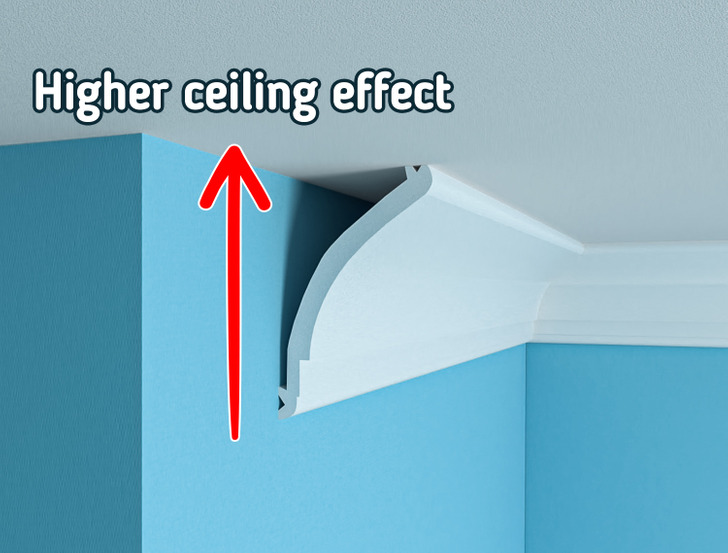
The term “crown” is often used to denote all types of molding, but we should mention that this name actually refers to an architectural style. The crown molding is meant to uplift the space and create the effect of a higher ceiling. It runs along the perimeter of the room between the ceiling and the walls. Also, it is supposed to make viewers look up and soak in the entire environment.
II. Factors to have in mind
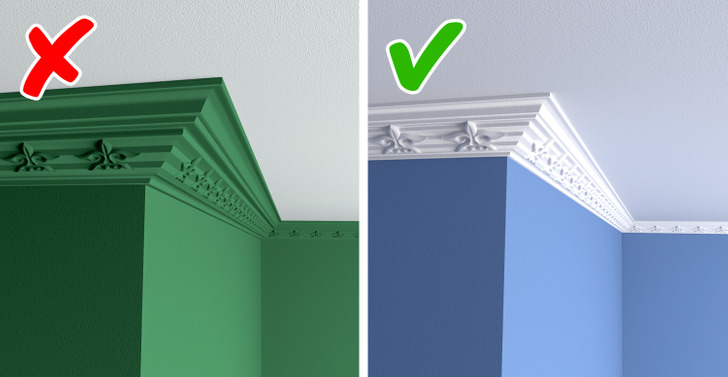
Before you choose a molding style for your home, make sure to consider these important factors:
- Align your molding with the room. You should be sure the molding does not overshadow other elements of the room and that it matches well with the style.
- Do not let your molding distract from your space. Less is more when it comes to this type of decor. Think about enhancing your space with a subtle molding, rather than overdoing it.
- Be wise with the size. The molding size depends on the size of the room and the height of the ceiling. For instance, a ceiling that is 8-foot-tall goes well with molding that is at least 2.5 inches high.
- Choose the color carefully. People generally pick white crown moldings, as shades of white create the optical illusion of a bigger space. Nevertheless, this isn’t a strict rule and it can look nice when the colors of the ceiling and the molding are different. Still, if you choose non-matching colors, beware that you may be making the room appear smaller.
- Consider hiring a professional to do the job. Although molding projects aren’t necessarily technically challenging and can be done by an amateur, they do require a lot of work and attention to detail. This is especially true if the idea is complex. This is why it is better to hire an expert and relieve yourself of this stress.
III. Styles of crown molding
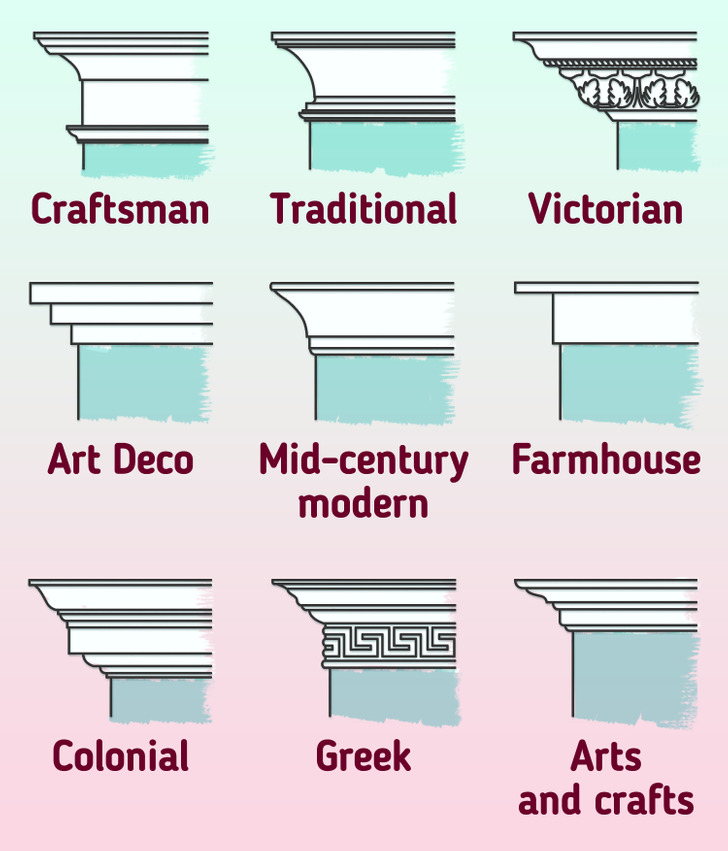
There are 9 styles of crown molding that are worth mentioning. They all originate from different eras and are meant to create different effects in the space. Let’s take a closer look at each one of them.
1. Craftsman style
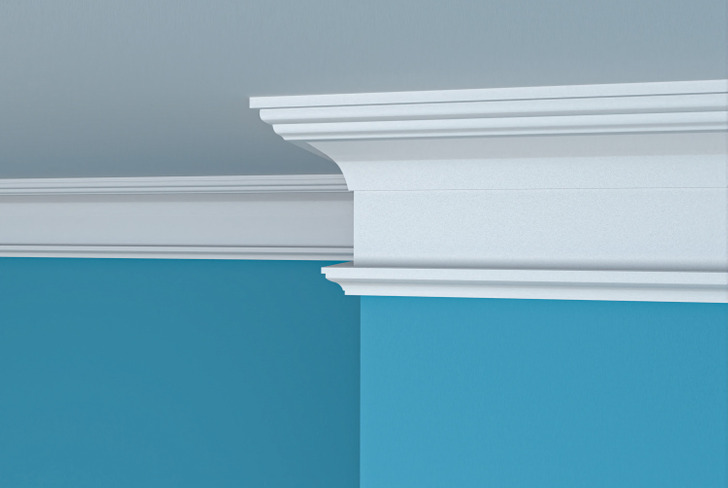
The Craftsman style is known for its versatility and it represents a mixture of influences from various movements, like Bungalow and Arts and Crafts movements. The concept of it has to do with the rejection of machine-manufactured products, while focusing on man-made materials.
2. Traditional
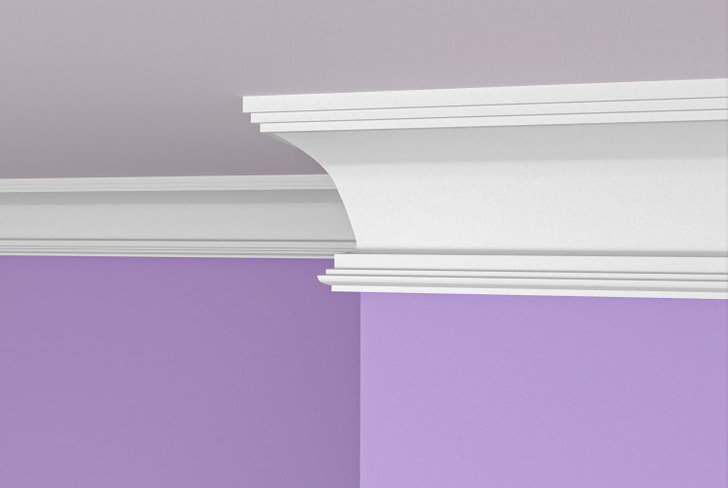
A great option for both the exterior and interior of your home, the simple traditional crown molding matches almost any design and pleases the eye. Despite the fact that it used to be made only out of wood, you can now customize it according to your needs while using a wide range of synthetic materials.
3. Victorian
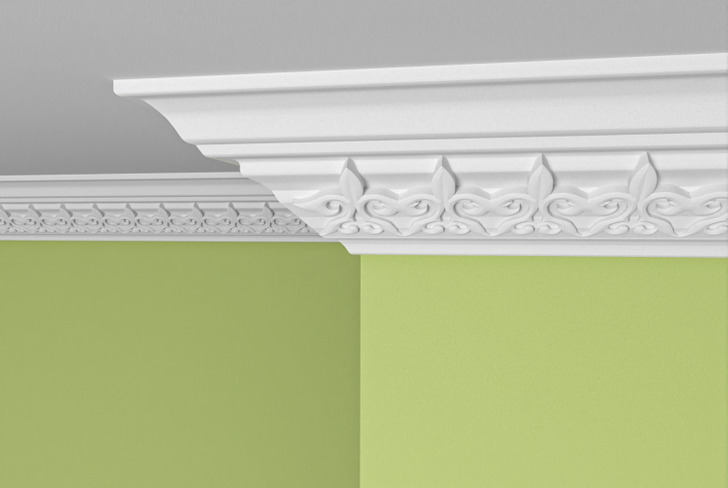
The architecture from the Victorian era was all about romanticism. It opted for diverse combos of shapes and profiles with the goal of making a unique blend. This luxurious crown molding is very attractive, so it is difficult to not look at it and admire its detail. However, if you opt for this molding profile, be careful to not overuse it, because it is rather extravagant.
4. Art Deco
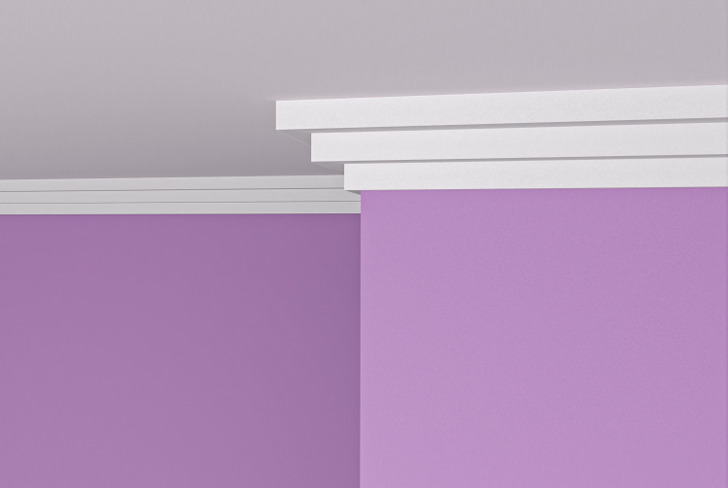
An Art Deco crown molding is visually interesting and bold. It consists of geometric patterns that can be found in indigenous art, as well as in modern artwork.
❗ Tip: Use it along the ceiling borders and you will make your room open up.
5. Mid-century modern
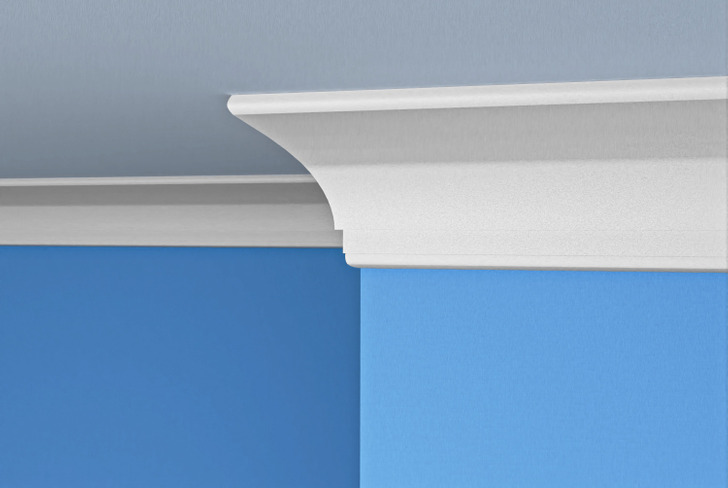
The main features of the mid-century modern crown molding are for sure simple shapes and clean lines, which is why this style is considered extremely versatile. It is usually used in bigger rooms that allow a lot of light. This style of crown molding will make a short ceiling look taller and, therefore, it will open up your space.
6. Farmhouse
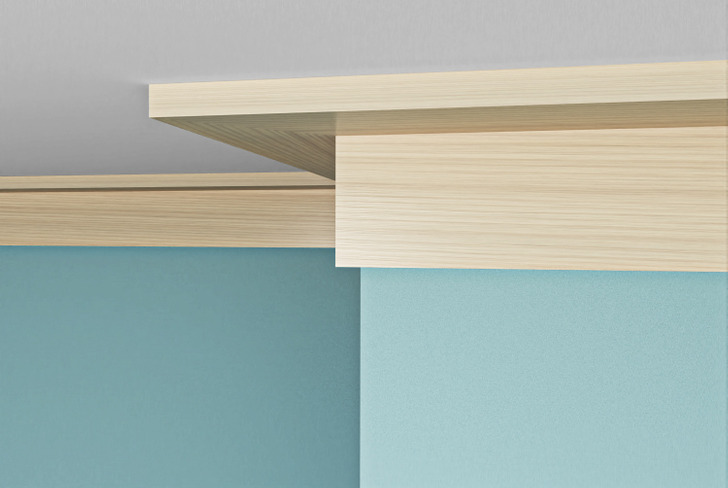
The farmhouse style of crown molding is a great choice if you need a simple crown molding. This style allows you to use various materials, including synthetic materials like plastic and plaster. Nevertheless, it’s important to know that the most authentic choice of material is definitely wood.
7. Colonial
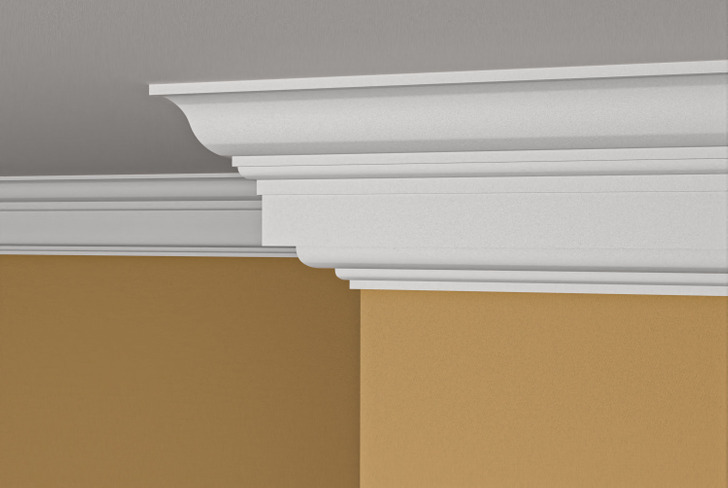
Another versatile style of crown molding is the clean-cut Colonial style. It comes from the Georgian era that lasted from approximately 1725 to 1820. Its principal feature is diverse stacked lines that look very refined and textured.
8. Greek
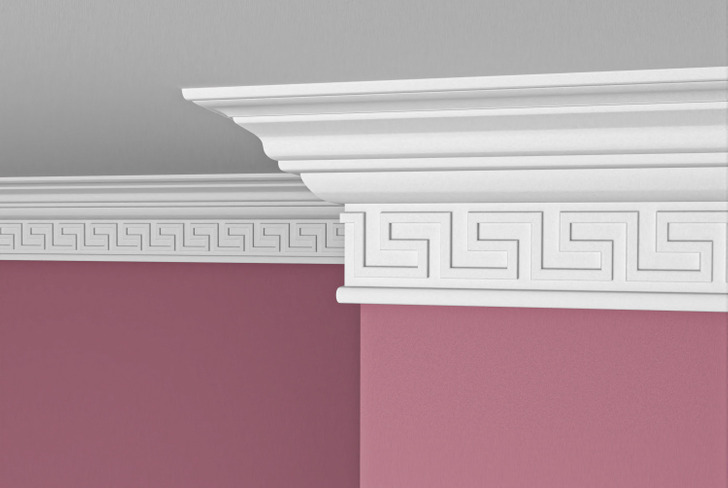
Greek crown molding is evidently inspired by the recognizable Greek architecture, but it actually appeared in the first half of the 19th century. However, one of the most relevant elements is the ellipse — not the circle — and it has more complex and unique motifs. This specific molding is eye-grabbing for sure.
9. Arts and crafts
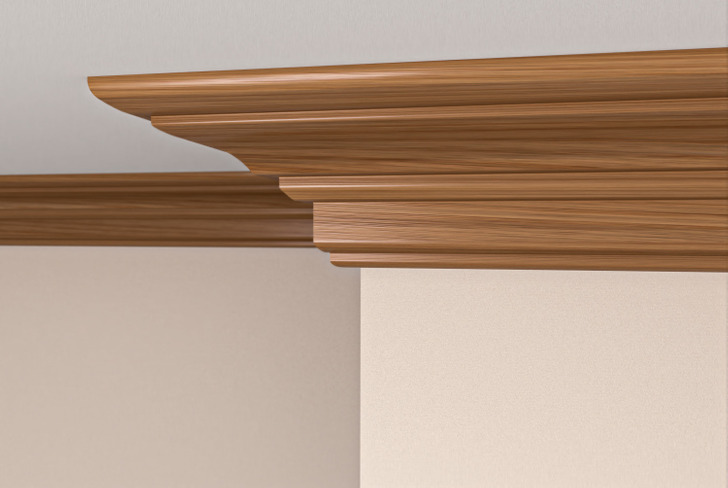
As we mentioned earlier, the Arts and Crafts movement was one of the major influences on the Craftsman style. This movement appeared around 80 years before the Craftsman era and it gave priority to man-made custom designs.